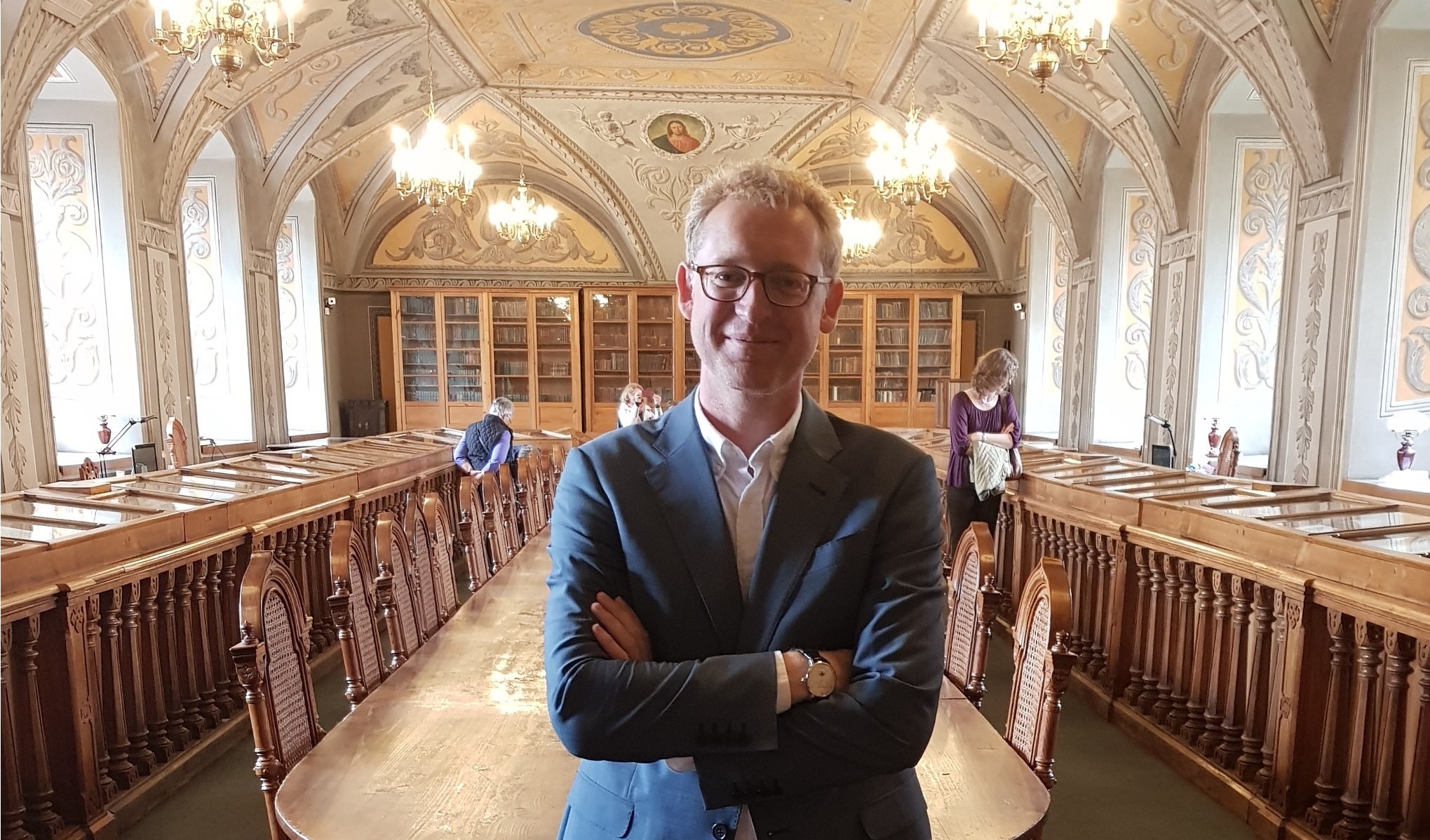Pro-Elderly Welfare States in a Child-Oriented Europe
 Pieter Vanhuysse, University of Southern Denmark
Pieter Vanhuysse, University of Southern Denmark
From May 22 to 23 Pieter Vanhuysse, Professor of Welfare Studies and public policy at the Department of Political Science and Public Management of the University of Southern Denmark has visited Faculty of Philosophy of Vilnius University. Here he gave a public lecture “Pro-Elderly Welfare States in a Child-Oriented Europe” .
What resources do different generations give each other? In answering this billion-dollar question, researchers often use strong terms such as ‘generational ‘storms,’ ‘grey power’ or ‘gerontocracy’ – the dictatorship of the elderly. In Ageing Populations in Post-Industrial Democracies, political scientist Achim Goerres and I show that these are much too sweeping and too alarmist statements. And in a new article on intergenerational transfers, demographers Robert Gal and Lili Vargha and I argue that these portrayals are even misleading, since they are limited to the statistically visible world of state policies and ignore the massive resources that families themselves transfer among generations, in cash and in time.
So much valuable time is spent within families in unpaid household labour, for instance, to raise children and cook, clean, and care for them – and often for (great)grandparents too. We show that on their own, looking mainly at public policies offers an incomplete and biased picture of intergenerational transfers – a proverbial case of looking for a lost car key at night only where the streetlight shines. Once we shine a wider light by also looking at what families give, a radically different picture emerges on how, and how much, generations give each other.
The reason is a key asymmetry in how all modern societies organize intergenerational transfers. Working-age people tend to pay taxes and social security contributions to institutionalize care for older persons as a generation through public policies. But they invest very significant private resources (money and time) to raise our own children. This results in asymmetric statistical visibility. Elderly transfers are near-fully observed in national statistics; those to children much less so.
We analyse not just public policies but also family cash transfers and time transfers for altogether ten European countries representing. Our main findings are twofold. (1) European welfare states, as welfare states, are pro-elderly biased: they devote significantly more resources per-capita to the currently old than to the currently young. (2) However, once we take also into account family transfers, the picture changes radically. European societies, as societies, actually transfer more than twice as many per-capita resources overall to children as they do to older persons.
Time is of the essence: children keep receiving time resources until age 25
Net time transfers are highest among newborns. Quite naturally, babies need the most time-intensive care. During their first year of life, European babies receive on average more than the full yearly per-capita prime-age labour income in their country in time alone. These time transfers subsequently decrease, but they remain substantial for a long time. Children still receive nearly 60 percent of per-capita prime-age labour income in time transfers at age 5, more than one-third at age 10, and more than one-fifth at age 15. They only start giving time from age 25. The largest net time contributors are in their thirties to mid-forties. This is the notorious ‘rush hour of life’, when many adults reach simultaneous peaks of labour market stress and household and family care duties. Adults in Europe keep giving (rather than receiving) time from age 25 right until age 79. This reflects the housework, grandparenting, and other civil society activities undertaken by ‘young-old’ Europeans in their sixties and seventies.
The full picture: childhood lasts until age 25; old age starts at age 60
When we combine all three types of intergenerational transfer – public policies, and private cash and time transfers - we obtain the full net balance of all resources received at any stage of life. All in all, children between birth and age 9 receive between 139 and 96 percent of prime-age labour income in their country. This is more than even the very oldest receive - those aged 90 and above. Young Europeans still receive more than three-quarters of prime-age labour income right until they reach age 17, close to official voting age.
Our method allows us to define lifecycle stages according to net total resource dependency, rather than conventionally (e.g., childhood until age 18, old age from age 65). Remarkably, childhood in Europe lasts on average until age 25, while old age already starts at age 60. Children receive less than half as many public transfers (from the state) than older persons. But once family transfers are included, the picture is inverted. Overall, children receive more than twice as many per-capita resources as older persons in Europe. In other words, Europe is a continent of pro-elderly welfare states embedded within child-oriented societies.
Why not more state support for child investment?
The key question is therefore: why do states not take a greater role in helping families raise children? After all, children are public goods. That is, their future taxes and other contributions will later benefit all of society, including non-parents. Yet, despite over two decades of ‘social investment states’ rhetoric, actual state investment in children is still comparatively small in most of Europe, except for the Scandinavian countries. In work on early human capital investment I have shown that state spending on early childhood education and care averaged only 0.6 percent of GDP in the Western, and 0.4 percent in the Eastern, EU member states in the first decade of the twenty-first century. This is a tiny fraction of state spending on unemployment, pensions, health care and even tax exemptions. Remember that children are also ever-scarcer public goods in aging societies. So, why have states not invested in them much more than we observe today?